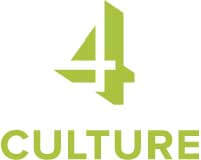Uncategorized
By Date
-
Doors Open Facilities
Deadline: Sep 4, 2024
This grant helps organizations acquire, build, or renovate the bricks and mortar buildings that make cultural experiences possible.
Details › -
Gallery 4Culture
Deadline: Dec 11, 2025
Gallery 4Culture presents the work of outstanding independent artists living in King County.
Details › -
Moving Stories: Short-Form Graphic Novels for King County Metro Transit RapidRide
Deadline: Jan 13, 2026
King County Metro and 4Culture seek six artists to create short-form graphic novels that illuminate community stories along new and existing RapidRide lines.
Details › -
Network of Support Request for Qualifications
Deadline: Feb 19, 2026
Apply to become a Network of Support coach, mentor, consultant, or technical assistance provider for current and potential 4Culture applicants and awardees.
More Information
cassie.chinn@4culture.org
206-263-8324
Details › -
Public Free Access
Deadline: Feb 26, 2026
This program helps reduce barriers to your organization's programming.
Details › -
Here and Now: Portable Artwork for the King County Public Art Collection
Deadline: Mar 3, 2026
4Culture seeks to purchase existing, unframed, two-dimensional and low-relief artworks by studio artists living or working in King County, Washington.
Details › -
Building for Equity: Project Development
Deadline: Apr 9, 2026
Funds and supports applicants building organizational capacity to meet long-term facility needs.
Details › -
Equipment for Organizations
Deadline: Jun 3, 2026
Putting essential tools in the hands of King County’s cultural organizations and agencies.
Details › -
Curiosity Pass: A Cultural Education Program
Deadline: Jun 11, 2026
Funds cultural partners with youth-serving programs and activities that expand learning opportunities in our K-12 public schools.
Details › -
Touring Arts Roster Auditions
Deadline: Aug 26, 2026
Serving as an online marketing tool for performing artists and a booking resource for event presenters.
Details › -
Landmarks Capital
Deadline: Sep 10, 2026
Supporting rehabilitation projects and designated landmarks.
Details › -
Cultural Support Services Projects
Deadline: Sep 16, 2026
Through Cultural Support Services Projects we support organizations and Tribes contributing to the quality of life and career development for cultural workers.
Details › -
Collections Care
Deadline: Sep 23, 2026
Helping organizations, archivists, and conservators safeguard history.
Details › -
Building for Equity: Anchoring Community
Deadline: Nov 5, 2026
Funds and fosters equitable development for organizations buying, building, or renovating buildings and specialized spaces that make cultural experiences possible. Project budgets that are 10 million+ are invited to apply.
Details › -
Landmark Nomination Support
Deadline: Dec 1, 2026
Helping individuals or organizations preparing a local landmark nomination of an historic site in King County, Washington.
Details › -
Building for Equity: Native Cultural Facilities
Deadline: Dec 3, 2026
Supports projects including land acquisition, development, renovations, and new construction that advance the preservation, expression, and vitality of Native cultures.
Details › -
Crisis and Transformation
Deadline: Late Fall 2025
Assisting current 4Culture Sustained Support awardees through times of emergency and opportunity with consultant services through the Network of Support.
More Information
cassie.chinn@4culture.org
206-263-8324
Details › -
Building for Equity: Facilities
Deadline: 2027
Funds organizations buying, building, or renovating the buildings and specialized spaces that make cultural experiences possible. Project budgets that are 10 million and under are encouraged to apply.
Details › -
Sustained Support
Deadline: 2027 TBD
Helping organizations do their best work by offering reliable, flexible funding over two-year cycles.
Details ›
Ongoing
-
Touring Arts Roster Presenter Incentive Program
Deadline: Ongoing
Funding a wide array of projects produced by those who are new to 4Culture.
Details › -
Heritage Professional Development Stipend
Deadline: Ongoing
Funds to help you participate, make connections, and learn new skills for your career path in the heritage field.
Details › -
Open 4Culture
Deadline: Ongoing
Funding a wide array of projects produced by those who are new to 4Culture.
Details › -
Emergency and Unforeseen
Deadline: Ongoing
Assisting organizations with unforeseen building costs and opportunities.
Details › -
Arc Artist Fellowship
Deadline: Sep 30, 2026
The Arc Artist Fellowship offers operational support for artists as they pursue their creative work.
Details ›
